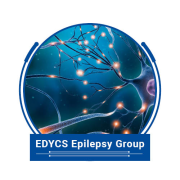

Author(s): Arun S* and S A Jabeen
Introduction: Patients with degenerative neurological diseases involving the basal ganglia may present with functional abnormalities of brainstem reflexes, resulting from disturbed activity of loops between the thalamus and the investigated circuits. The Somatosensory Evoked Blink Reflex is a release phenomenon transmitted via the brainstem reticular formation. This response may be clinically relevant in disorders associated with brainstem lesions.
Materials and methods: A total of 54 subjects were included. We performed somatosensory evoked blink response in these patients.
Inclusion criteria:
• Age between 18 and 80 years.
• PD patients diagnosed according to the MDS criteria.
• Parkinson plus syndrome (DLB, PSP, MSA) patients.
Exclusion criteria:
• Patients with associated peripheral neuropathy.
Results: We observed that the presence of somatosensory evoked blink reflex was more common in IPD patients and dyskinesia, postural instability, dysarthria, dysphagia and bowel/bladder abnormality showed positive correlation with SSEBR.
Conclusion: In Parkinson's disease patients the presence of SSEBR was associated with increased probability of dyskinesia, postural instability, dysarthria, dysphagia and bowel/bladder abnormality.